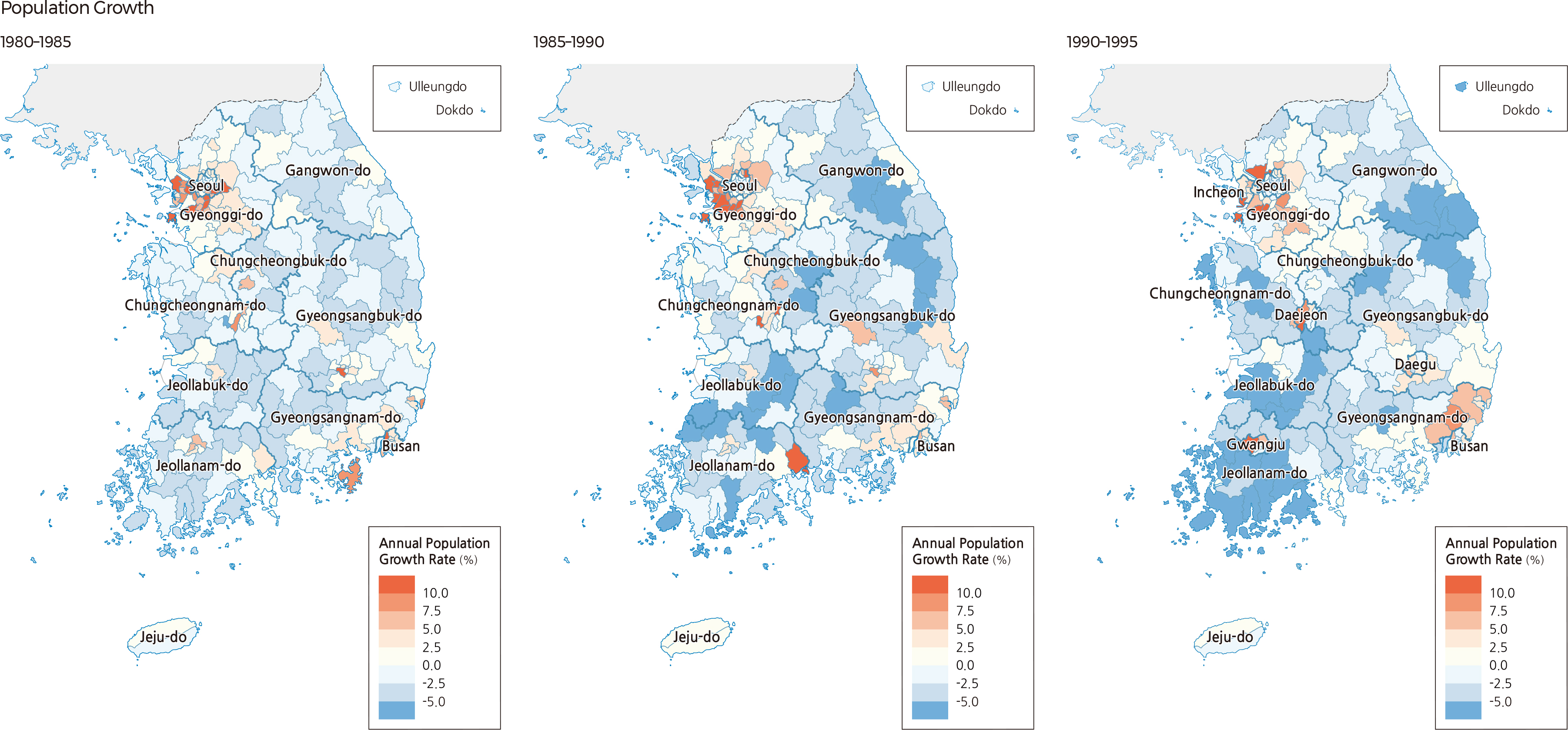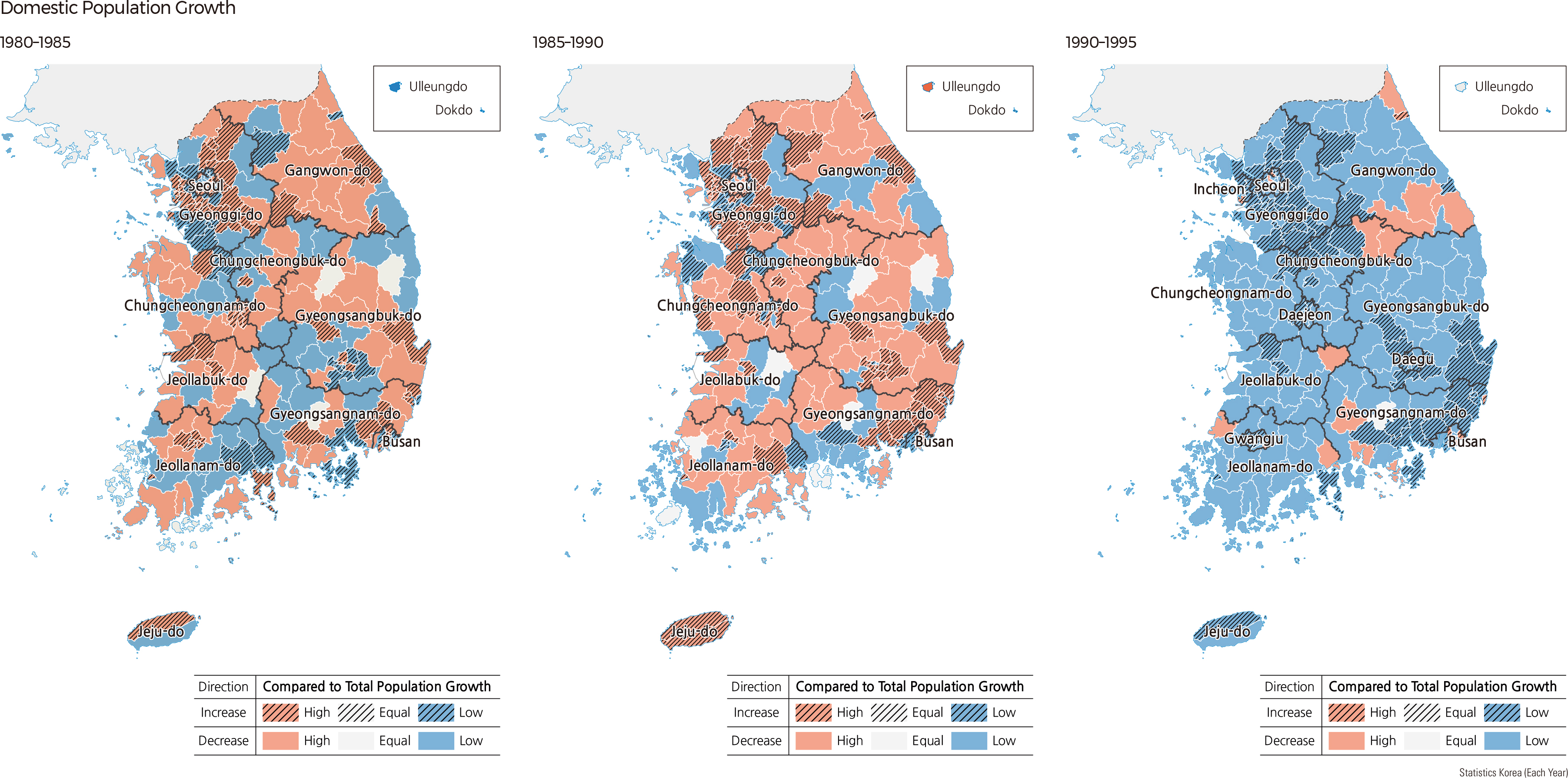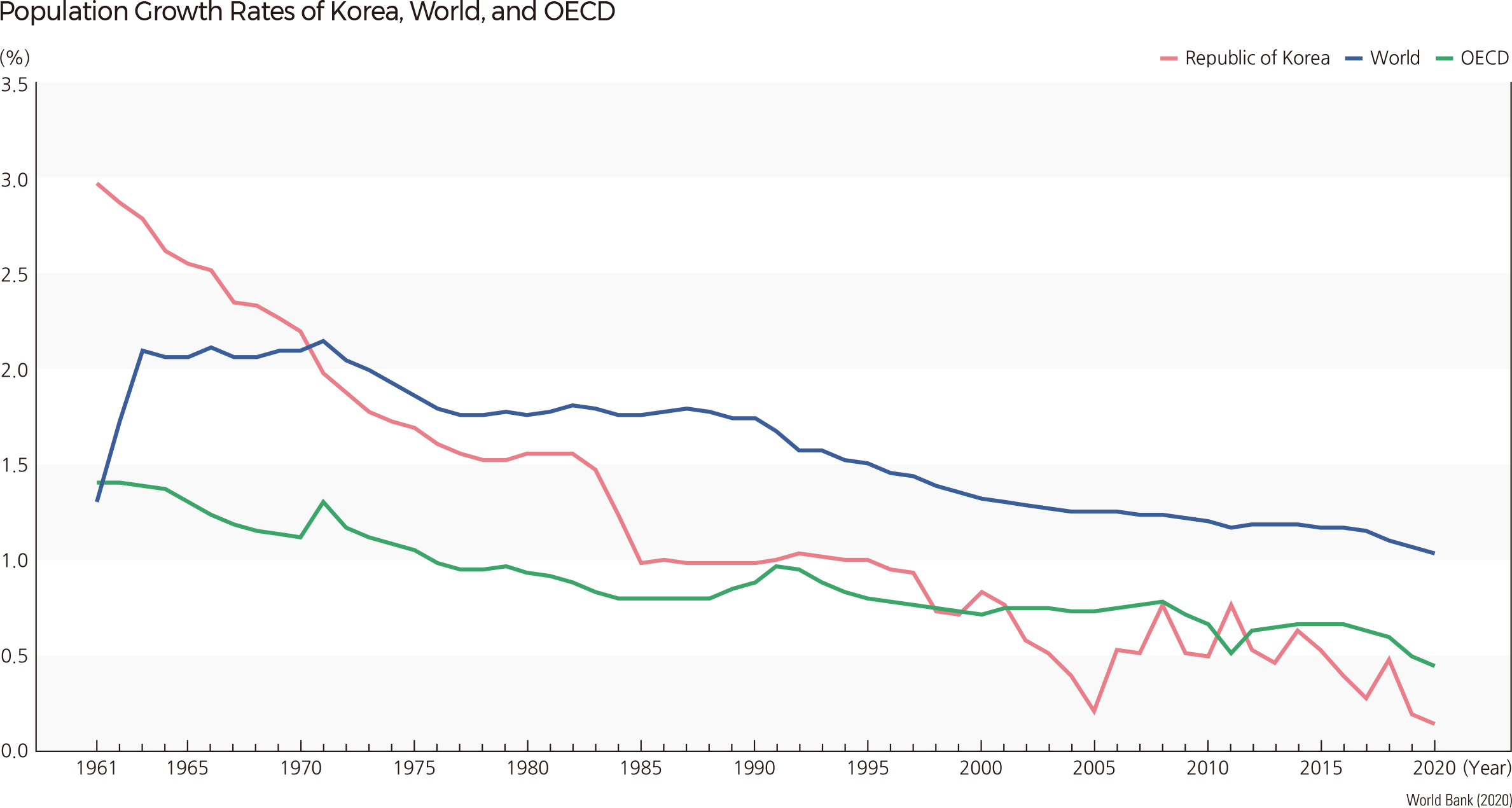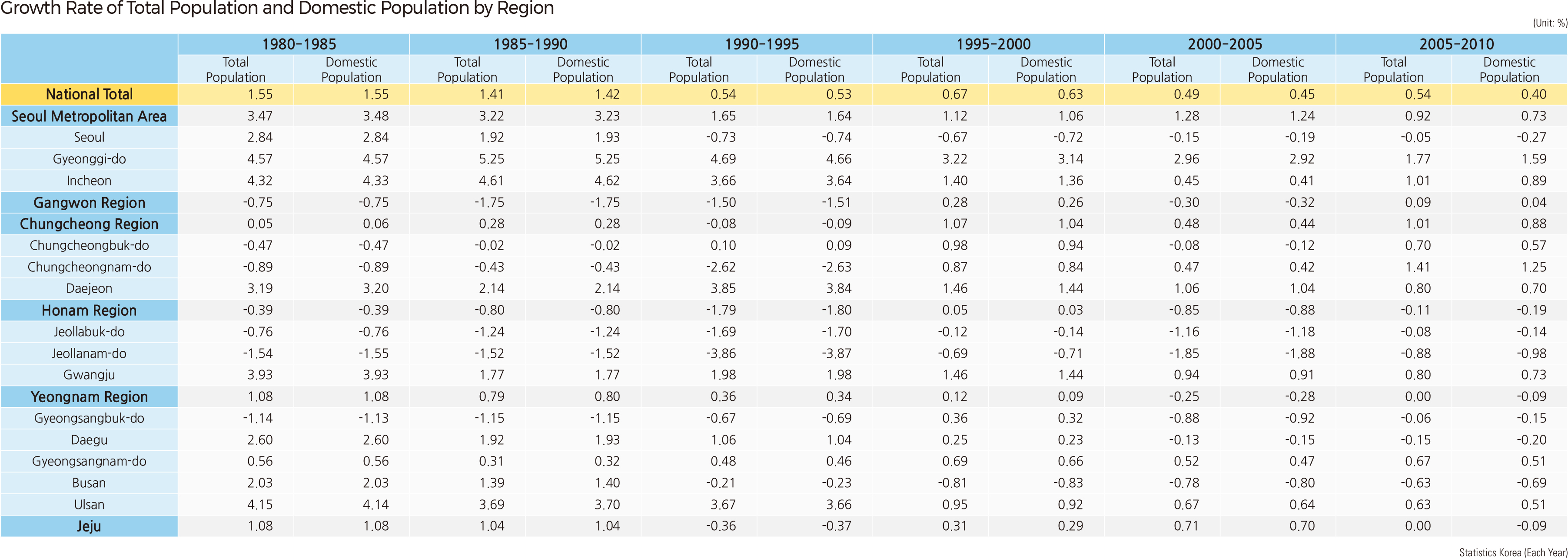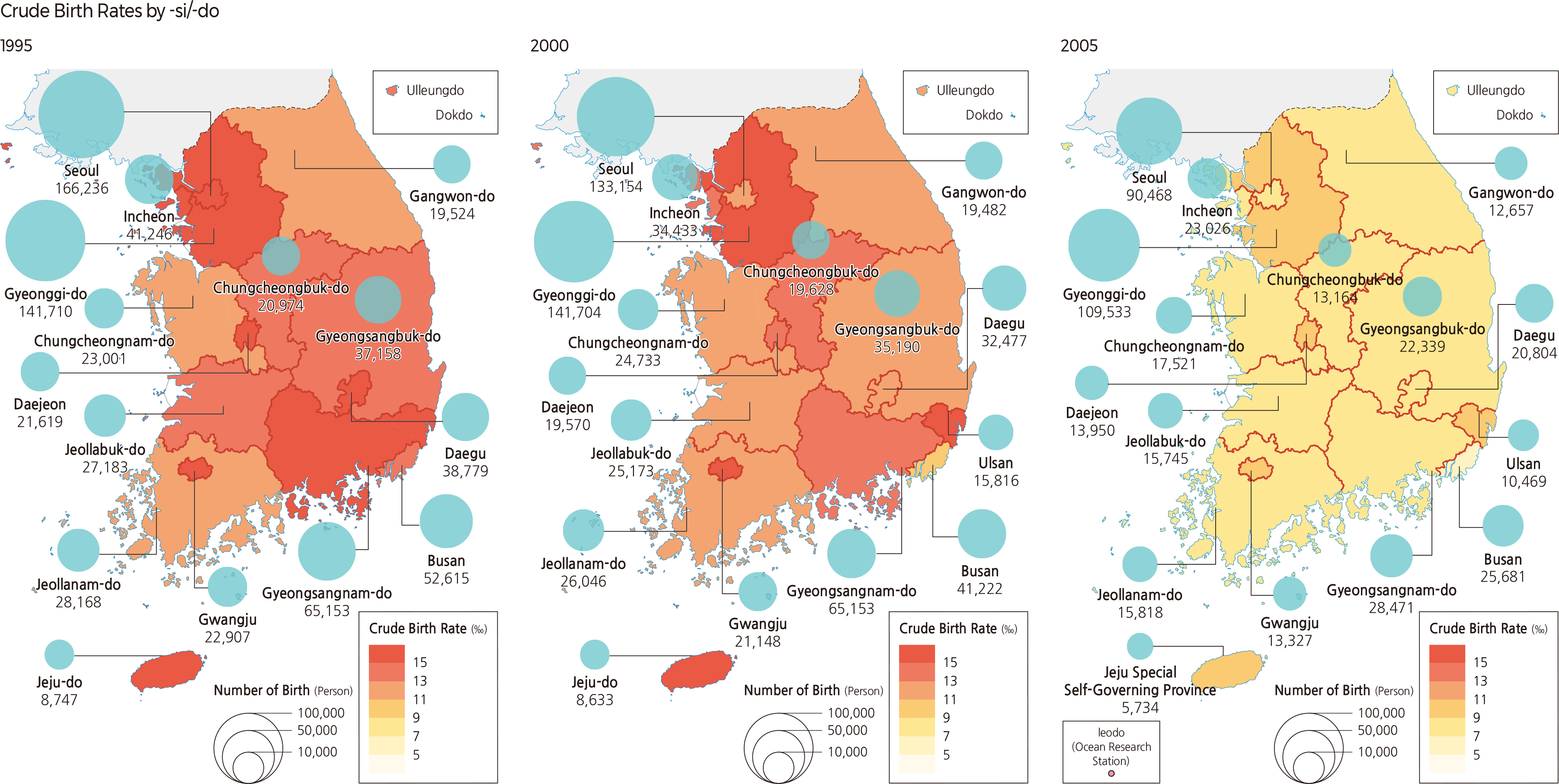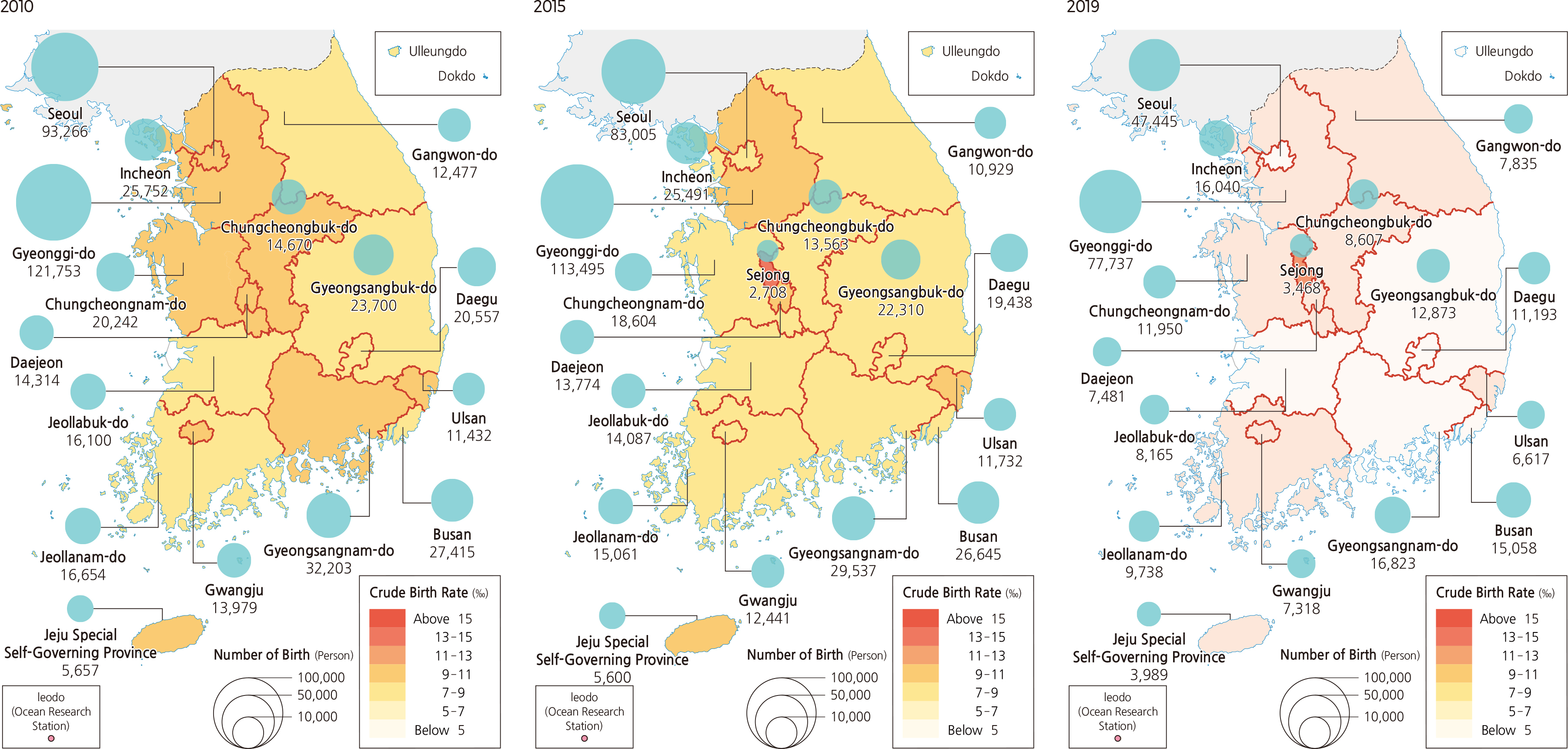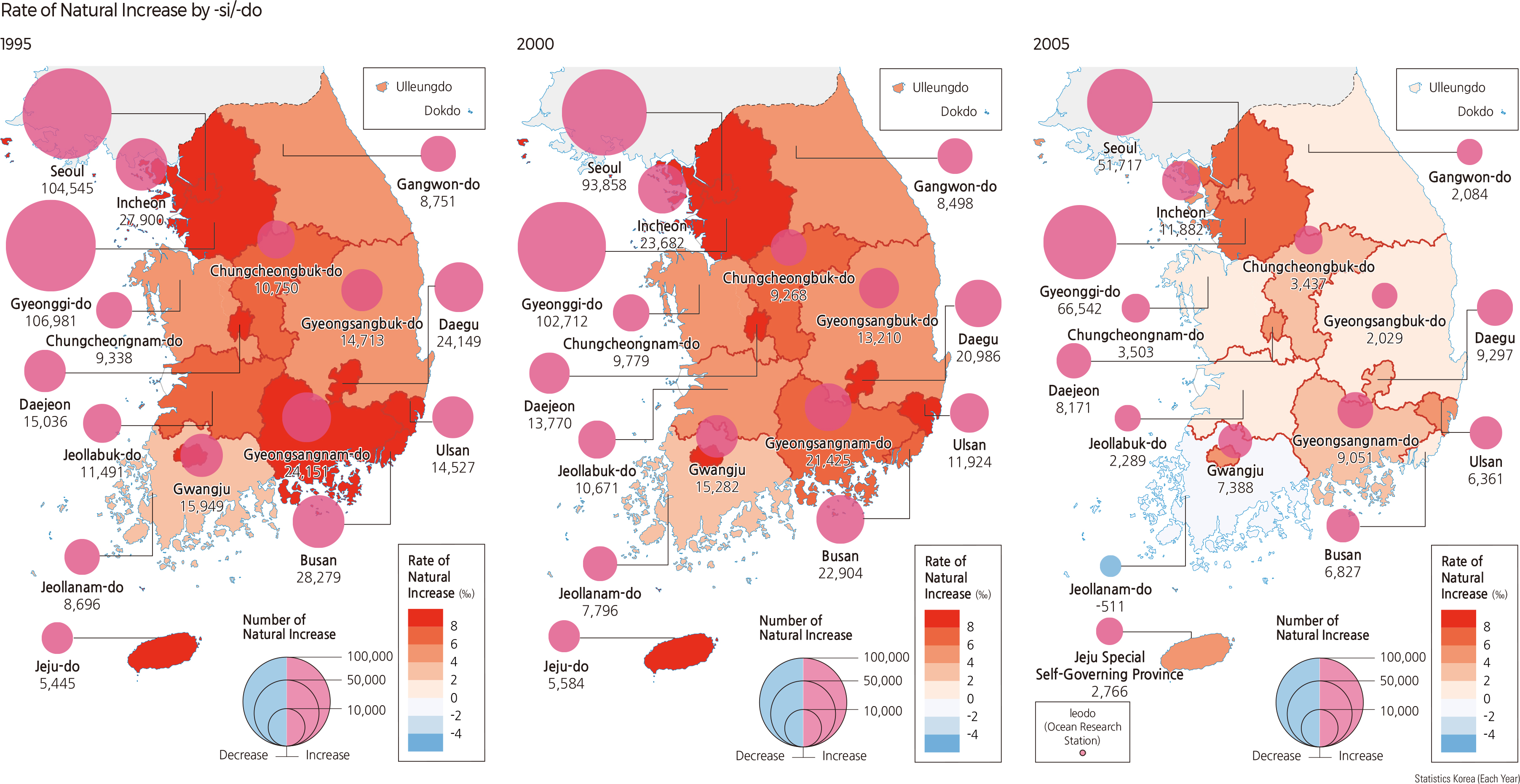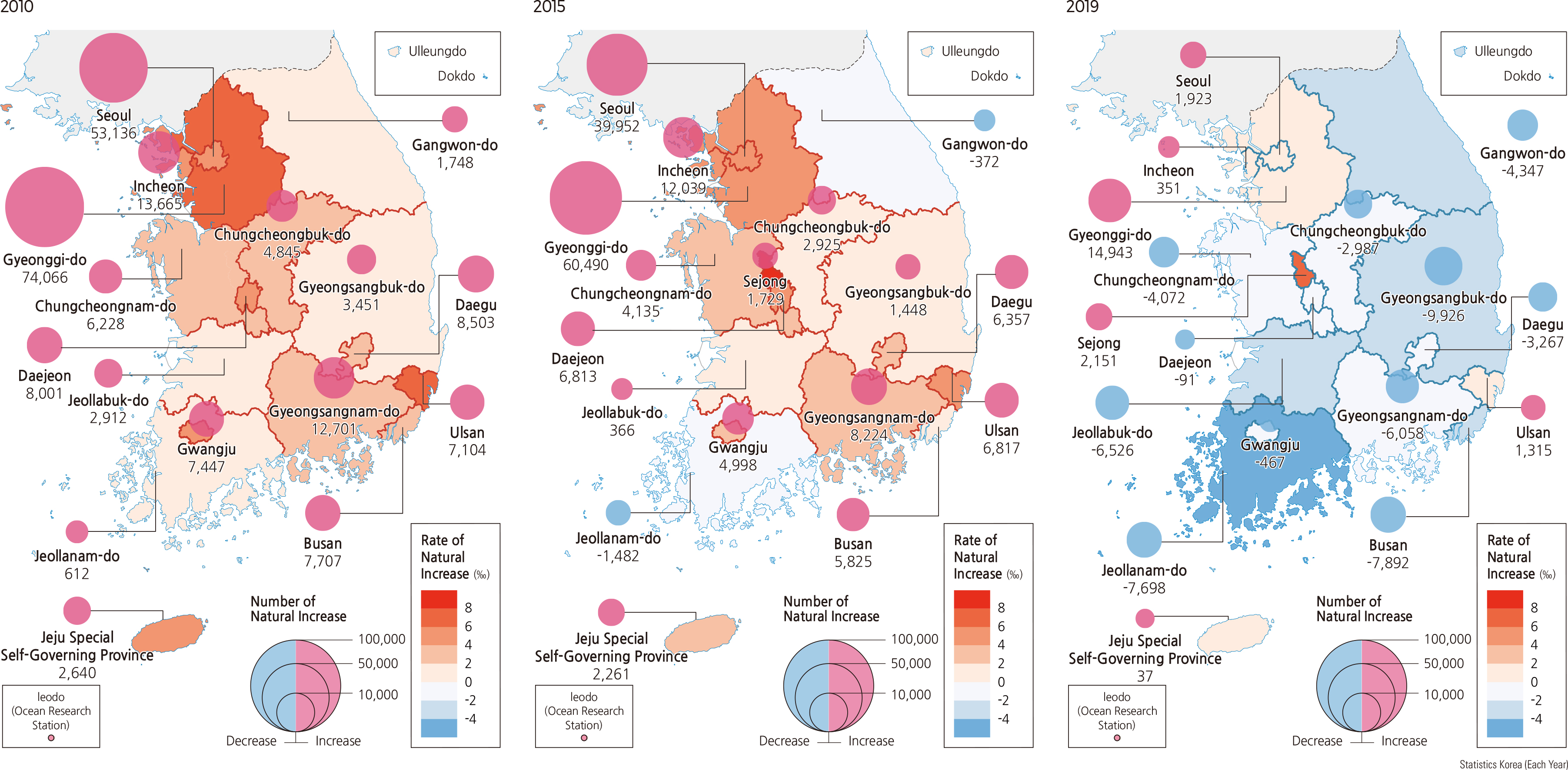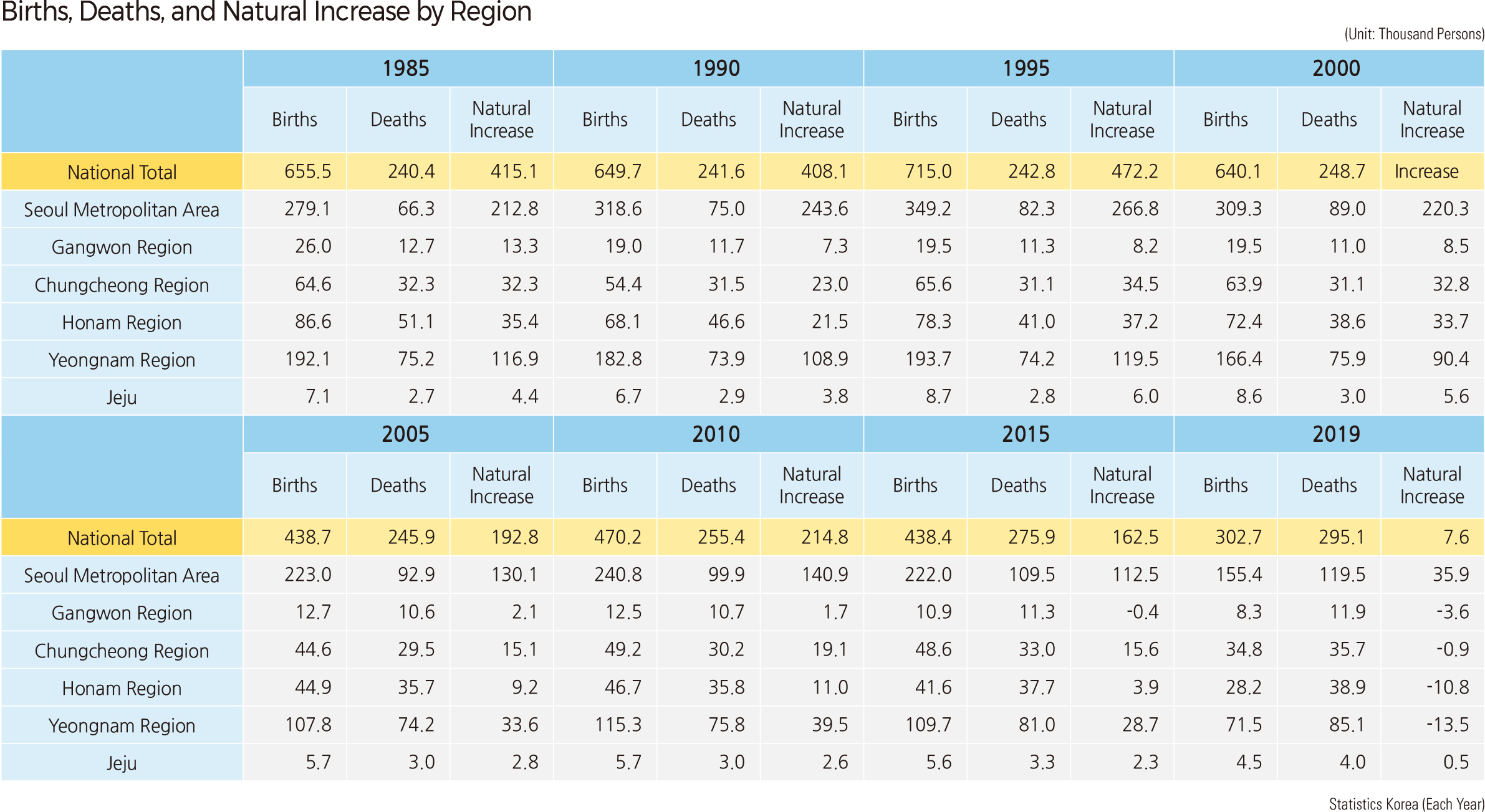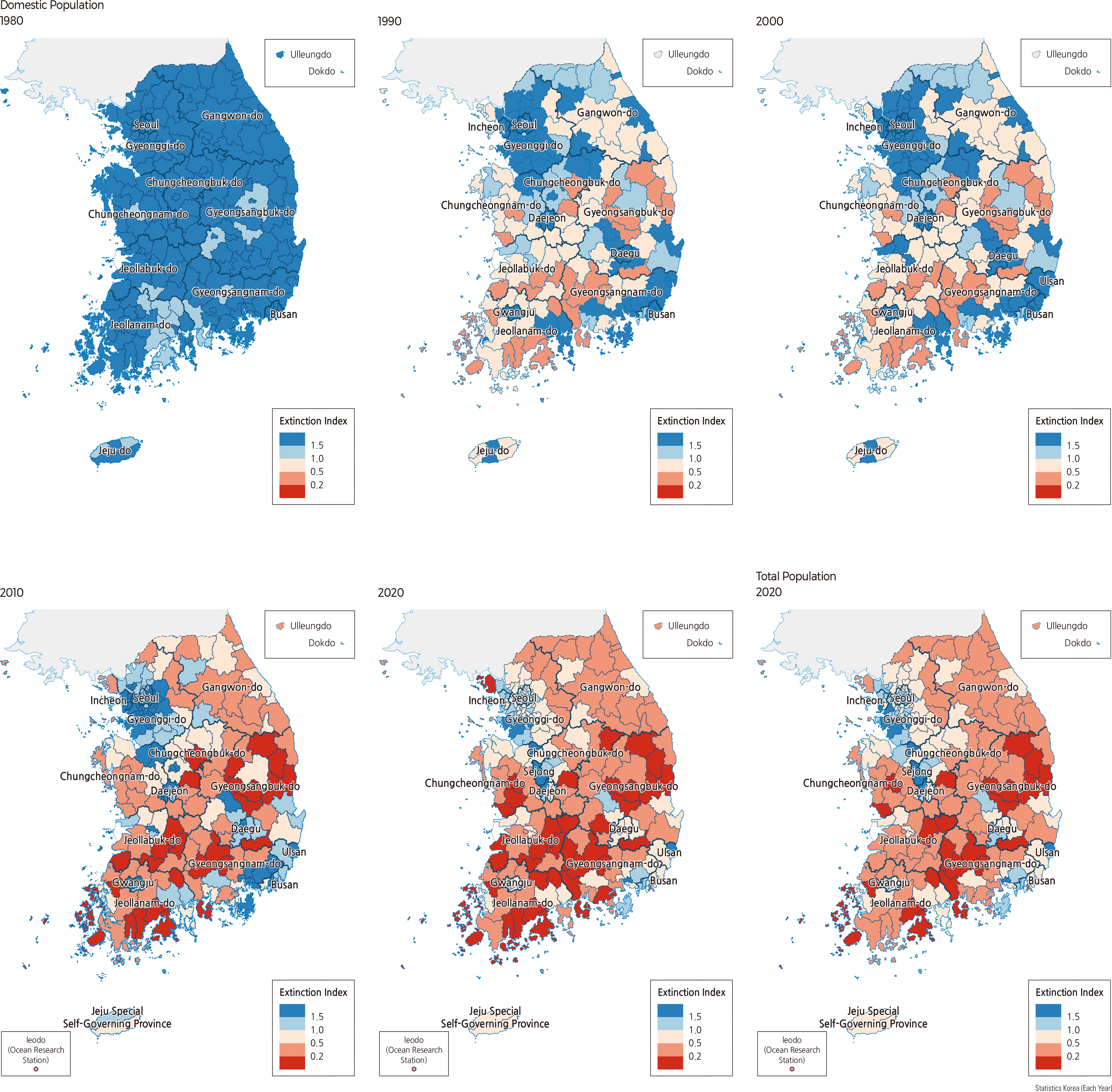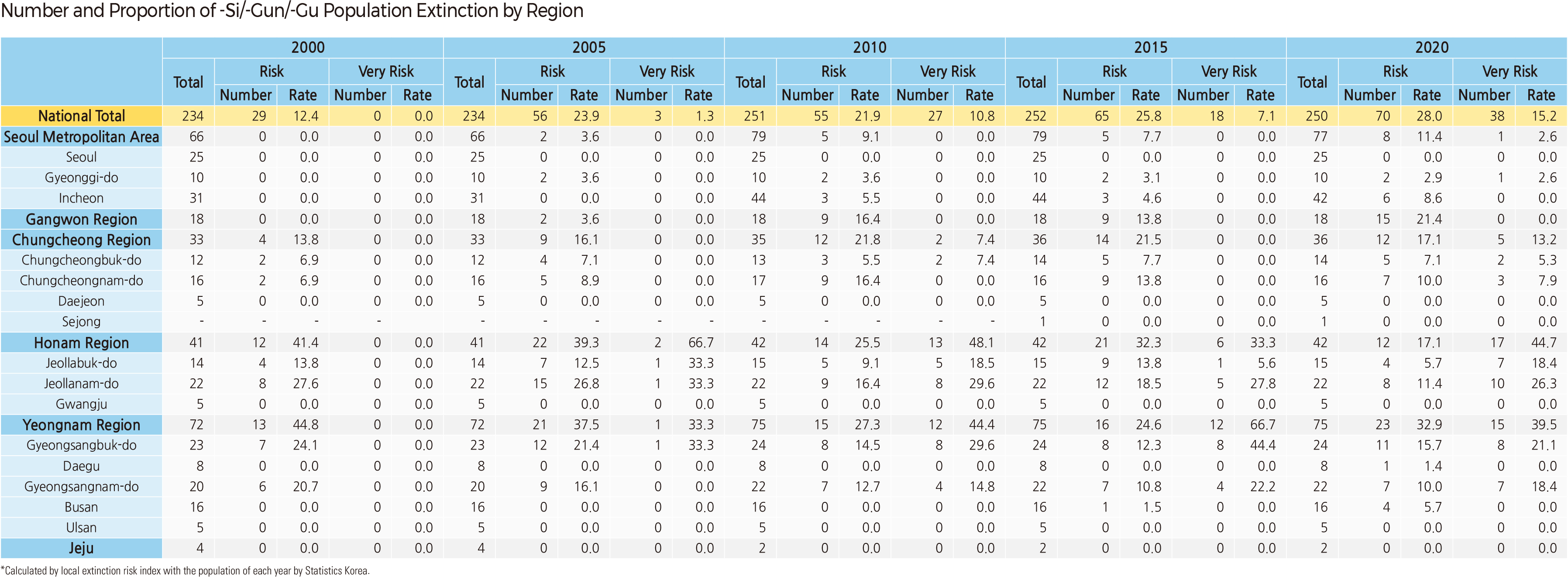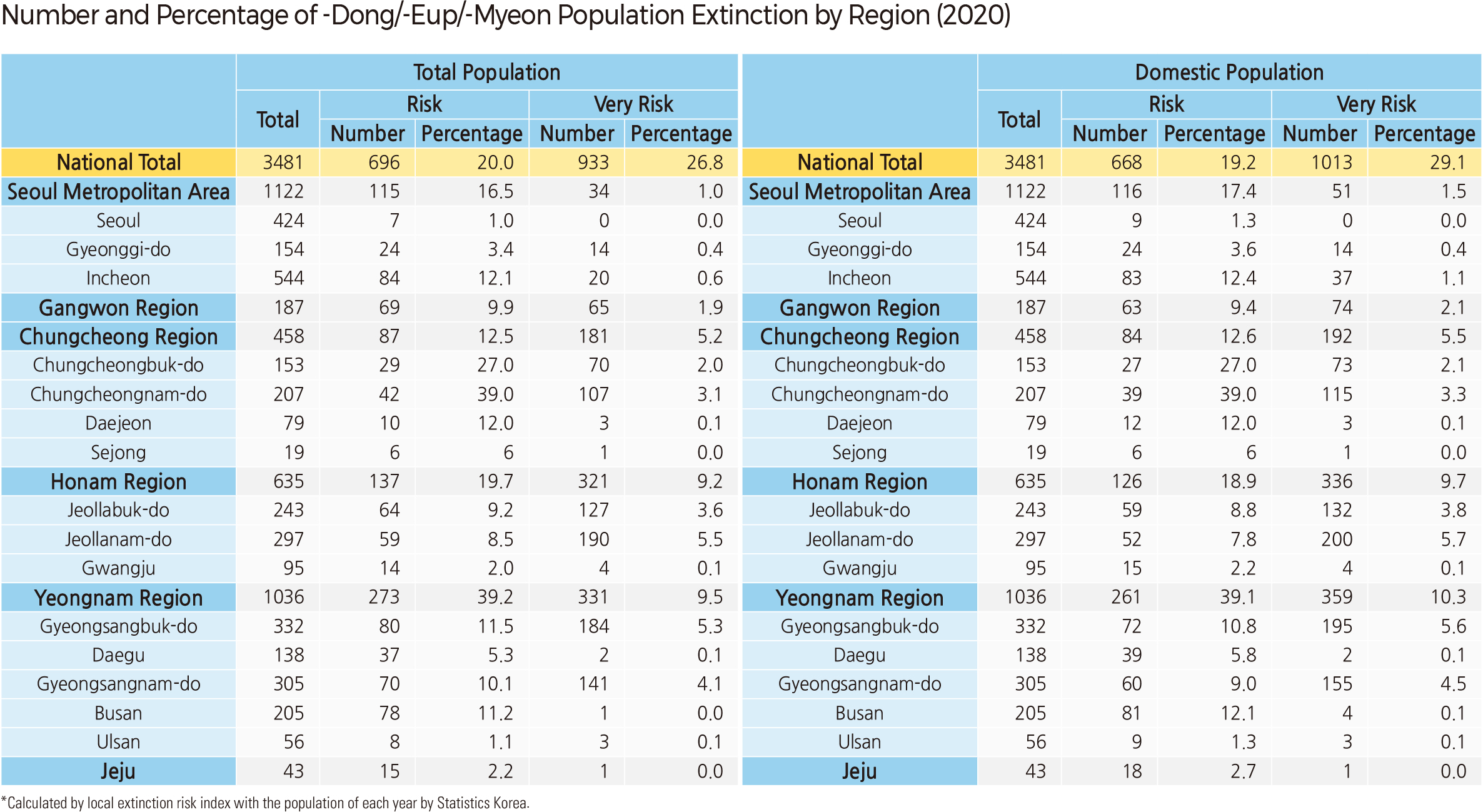English III 2021
The foreign population grew at a rate of 2–3 percent until the 1960s, which was higher than that of OECD and the world, but the growth rate declined sharply from 1970 to the mid-1980s. This downward tendency in population growth continued in 2020. As a result, the population grew 0.14 percent in 2020. According to the five-year censuses (1980–1985 and 2005–2010), the annual population fell by about 1.0 percent during the two periods. While the Chungcheong region and Gangwon-do experienced an increase in population, negative growth occurred in other regions. The change rate of domestic population growth was higher than that of the total foreign population during 2005–2010, while they were similar in 1980–2005.
Since independence from Japanese occupation, Korea’s population has continued to rise rapidly, with a fertility rate higher than that of the world average until the 1960s. In the 1960s, the fertility rate was 6. The fertility rate of Korea reached a level similar to the OECD average due to strong population suppression policies implemented in the 1960s and 1980s. However, the low fertility phenomenon has worsened since 1990. In 2019, Korea’s total fertility rate fell below 1, and the crude birth rate also declined to 1/7 compared to that of 1960. The death toll decreased steeply from the 1960s to the 1970s, but it has remained unchanged since the 1980s. Due to such changes in births and deaths, Korea’s natural growth in population has become lower than the averages of both the world and OECD countries, and the nation is now facing a demographic cliff. In 2019, all regions but the Seoul Metropolitan Area and Jeju-do were experiencing negative natural growth in their populations.
In Korea, nationwide concerns about the disappearance of the local population are increasing with lowered birth and fertility rates. The local extinction risk index, a division of the female population of childbearing age from 20 to 39 over the elderly population over 65 years old, represents the level of population extinction as follows: 0.5–1.0 for a “caution” area, 0.2–0.5 for a “risk” area, and less than 0.2 for a “high risk” area. When considering only domestic people in -si/-gun/-gu areas, there were no areas at risk of population extinction or areas at high risk in 1980 and 1990. However, these areas have been rapidly increasing since 2000. The number of risk areas escalated from 29 in 2000 to 70 in 2020. The number of high-risk areas increased from 27 in 2010 to 38 in 2020. Meanwhile, the number of risk and high-risk areas with both domestic and foreign residents differed from that with only domestic residents: 9 more risk areas and 14 fewer high-risk areas. Based on region-level population extinction with only Koreans, the number of at-risk and high-risk areas is generally higher in the Honam and Yeongnam regions than in other ones during the period of 2000–2010. In 2020, 32.8 percent of risk areas were found in the Yeongnam region, and 17.1 percent of them in the Honam and Chungcheong regions, respectively. Meanwhile, considering high-risk areas, 44.7 percent and 39.5 percent of the -si/-gun/-gu areas belong to the Honam region and Yeongnam region, respectively. The risk of population extinction in these two regions is very high compared to the others. When examining population extinction in provinces, high-risk areas were more in Jeollabuk-do, Jeollanam-do, Gyeongsangbuk-do, and Gyeongsangnam-do than in other provinces in 2020. Uiseong-gun and Gunwi-gun of Gyeongsangbuk-do and Goheung-gun of Jeollanam-do have a higher risk of extinction due to population decline than other areas. As of 2020, there were no people in Jinseo-myeon (Paju-si, Gyeonggi-do), Geundong-myeon, Wondong-myeon, Wonnam-myeon, and Imnam-myeon (Cheorwon-gun, Gangwon-do), and Sudong-myeon (Goseong-gun, Gangwon-do). When considering only domestic people in -eup/-myeon/-dong areas, risk and high-risk areas appear evenly in most areas except large cities. A large number of risk areas were found in the Honam and Yeongnam regions, and those of the Seoul Metropolitan Area were similar to those of the Honam region due to the inclusion of the Gyeonggi-do with the largest number of risk areas in the nation. The number of high-risk areas is also higher in the Honam and Yeongnam regions than that of other risk areas. Considering the foreign population in regions and provinces, the number of risk and high-risk areas is similar to that of only domestic people, but the proportion of risk and high-risk areas is generally low. Overall, high-risk areas for population extinction largely appear in the -myeon areas. The highest risk is observed in Namhu-myeon (Gunwi-gun, Gyeongsangbuk-do) when considering only the domestic population. Sanseong-myeon (Andong-si, Gyeongsangbuk-do) is at high risk of extinction in the population with foreigners.
|
